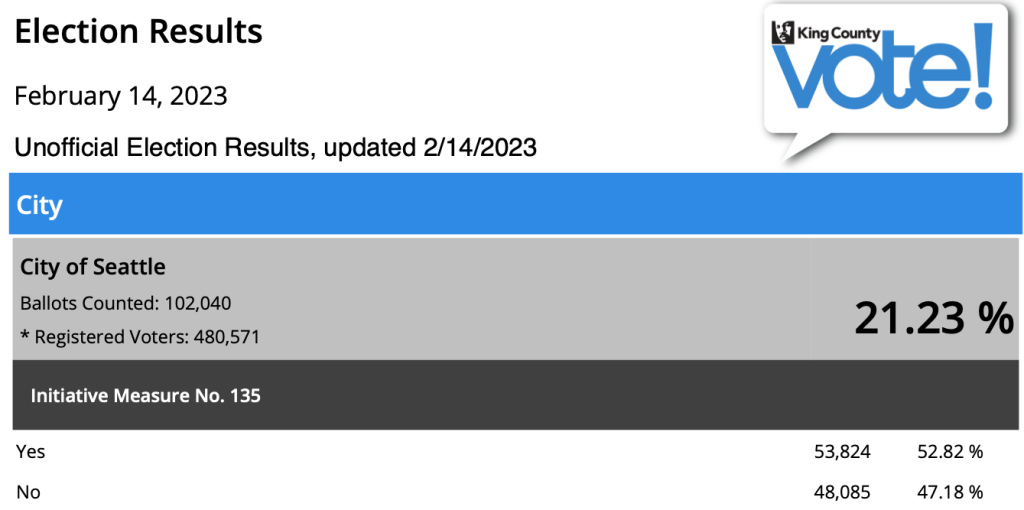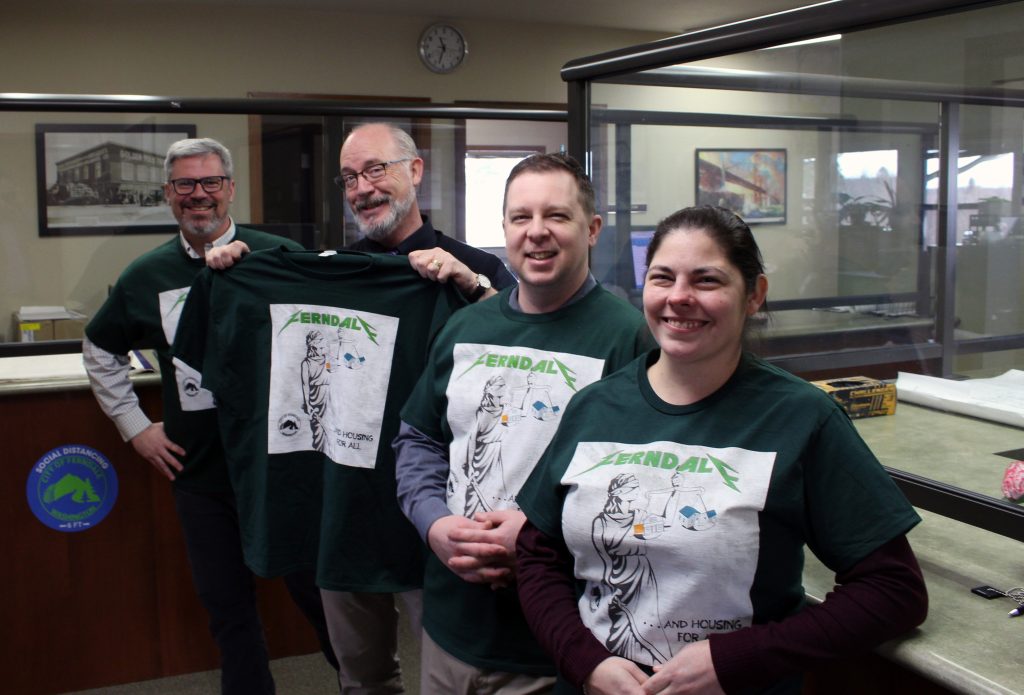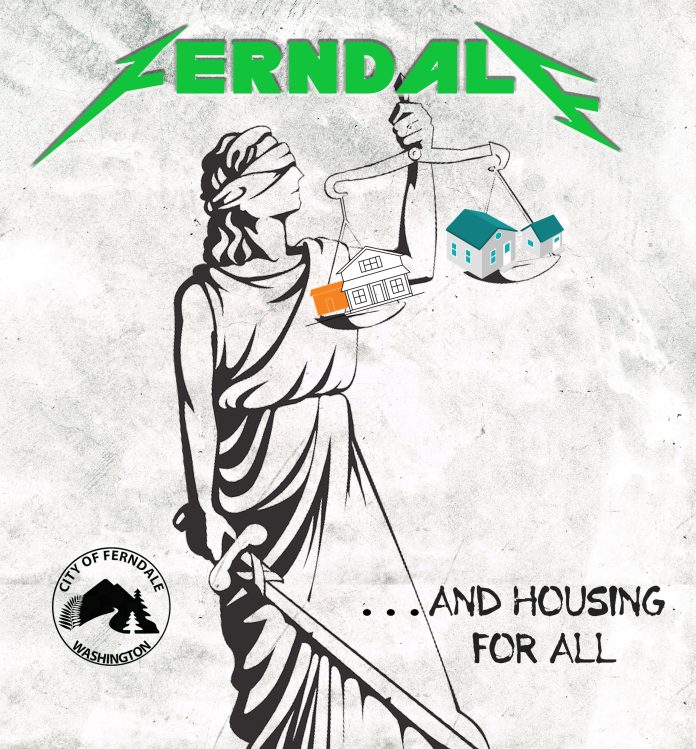
In this installment of Housing Notes, we focus on Seattle where there’s a bevy of housing news to report on, and then make a visit north to Ferndale where the City is banking on residents’ love of heavy metal music to promote ADUs (accessory dwelling units).
Social Housing Initiative 135 leads after first ballot count.
February’s special election in Seattle had its first ballot drop released last night and the results were encouraging for supporters of the Social Housing Initiative 135. So far the initiative is leading by a margin of almost 6%, with turnout at 21% via 102,040 ballots counted so far. Results will continue to be shared during the next week and a half and can be tracked on King County Elections website.
An initial lead is promising for supporters of social housing since historically more progressive voters cast ballots later in Seattle elections. King County Elections will be releasing ballot counts by 4pm each following day until all votes are counted and final results are announced on February 27th. As an endorser of I-135 and social housing, The Urbanist is hoping that this early lead quickly translates into a decisive victory.
The House Our Neighbors coalition, which ran the campaign to get I-135 on the ballot and then pass it, hosted an election night party at Washington Hall in the Central District. Councilmember Tammy Morales, a big supporter of social housing, described the event as “lit” shortly after ballot drop.
Coalition calls on Seattle to boost housing options in Comprehensive Plan study.
A recent nationwide study released by CraftJack, a company that connects people seeking help with home improvements to contractors, found that 68% of the 1,005 people polled were concerned about the housing market and that 61% of those polled who wished to buy a home 2023 could not afford to.
The broad consensus that something is wrong with the housing market is a major reason why a sizable coalition of business, labor, and climate groups, including The Urbanist, submitted a letter to the City of Seattle calling for bigger thinking around housing and land use decisions in the study for the 2024 Major Update to the City’s Comprehensive plan.
One Seattle Housing Coalition Comments on Revised Scope by Natalie Bicknell on Scribd
“Healthy communities need healthy housing markets, and we need both for a healthy economy. We can’t rely on half measures, and we know voters support solutions. Our recent Index poll of 700 Seattle voters showed 67% support the building of new housing in their neighborhoods and 79% support policies that make it easier to build new housing in transit and commercial areas. With support this strong, it’s time for action,” Rachel Smith, Seattle Metropolitan Chamber of Commerce President and CEO, said in a press release. “The One Seattle Plan is a window of opportunity to make important policy changes that set the stage for more housing options so that more people, across life stages and income levels, can afford to live in Seattle.”
The letter urges the City to adopt three high impact changes to its current housing alternatives, which include a No Action, Focused, Broad, Corridor, and Combined alternative. (Learn more about the proposed alternatives here.)
The changes called for by the coalition include:
- Permitting 5-story apartments throughout the entirety of the frequent transit and park access walkshed in the Corridor Alternative, not just in existing commercial zones on arterials.
- Expanding the proposed height bonus for affordable housing in the Broad Alternative to ensure it meets the city’s equity goals.
- Expanding neighborhood anchors within the Focused Alternative to ensure they truly create 15-minute neighborhoods.
On an additional note, the coalition is also calling on the City to identify areas where transit can be made more frequent and park access can be improved, increase opportunities for commercial and community spaces in areas zoned for homes, increase opportunities for high-rise construction near existing and future light rail stations in areas with low displacement risk, and eliminate parking requirements among other demands.
The coalition’s hope is that the 2024 Major Plan update can set up Seattle to more successfully — and equitably — accommodate growth.
“Seattle needs more homes of all types, especially affordable homes. Affordable housing is restricted by the same zoning regulations as market-rate housing, and large parts of Seattle are effectively off-limits to affordable housing,” Patience Malaba, Executive Director of the Housing Development Consortium, said in the press release.
The letter comes right on the heels of the City’s release of the its One Seattle Comprehensive Plan Community Meetings report. Between November 2022 and January 2023, the Office of Planning and Community Development (OPCD) held five in-person meetings in neighborhoods across the city. Over 3,823 public comments were shared in response to two topics: access to housing options and creating new communities.
In response to the first question on housing options, people most commonly cited a need for increased affordable housing options in their neighborhoods. More housing choices and more family-sized options also emerged as priorities.
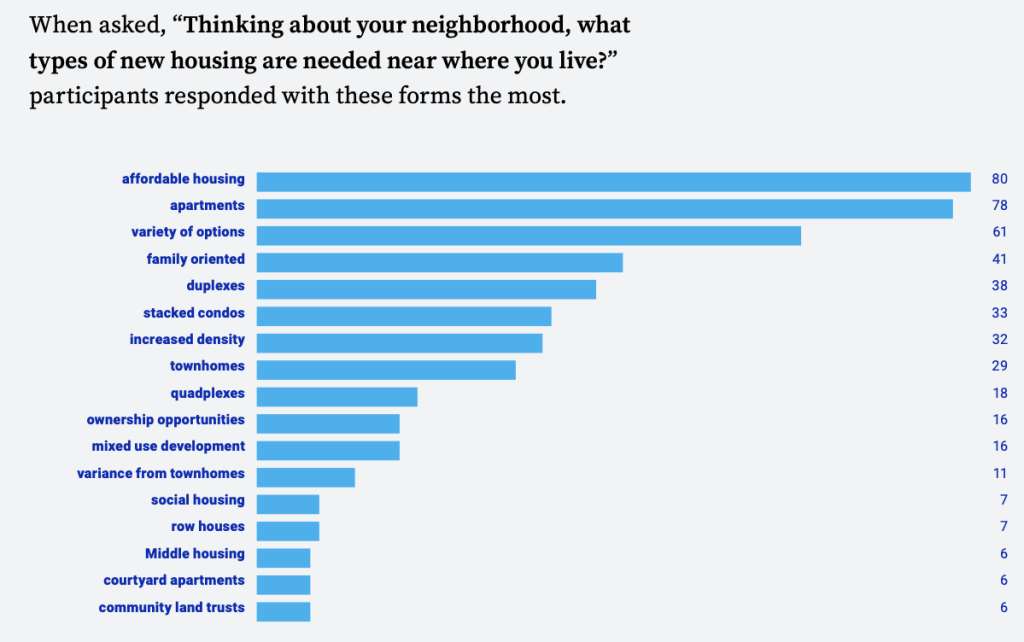
When it came to where new housing should be constructed, the comments strongly expressed the desire that it be built “everywhere” and “in all neighborhoods.” Increasing housing near transit and parks was another common theme that surface in the comments.
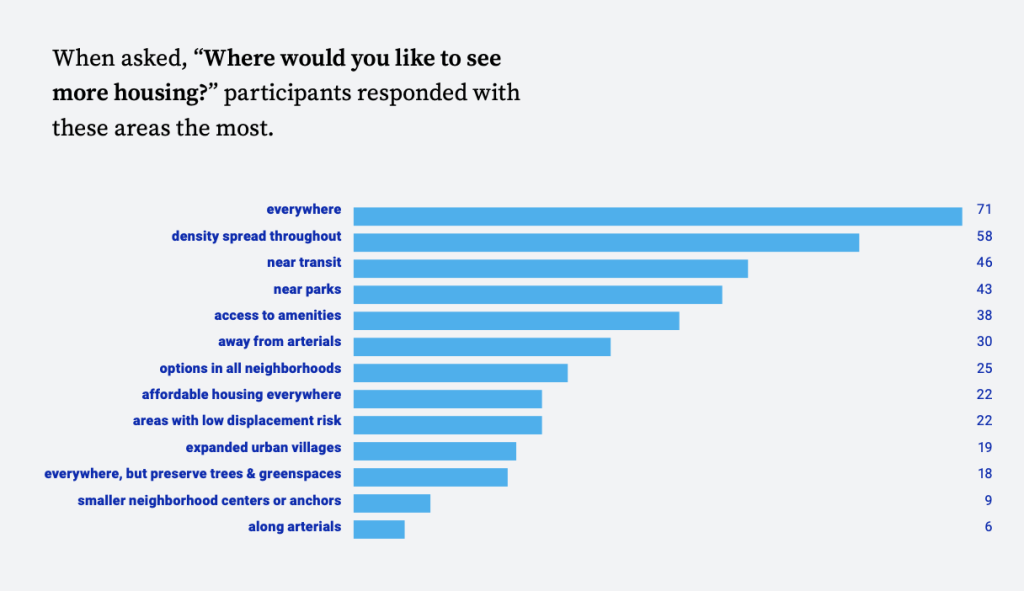
In response to what people loved most about their neighborhoods, most respondents identified proximity to amenities. Parks, grocers, and transit were common amenities people said they loved having in their neighborhoods. When it came to what people felt was missing in their neighborhood, community spaces was the most common response, followed closely by bike infrastructure and diverse housing.
In terms of a timeline, the City of Seattle will be analyzing public input and developing goals and policies during the first two quarters of 2023, which will be used to create refined growth strategies and a draft plan that will be release for public comment later in the year. To keep up to date on the One Seattle Plan, you can sign up for the city’s mailing list.
Bellwether proposes affordable high-rise in U District.
Bellwether Housing has put in an application for a 16-story mixed-use tower with 245 affordable homes across from the UW Medical Center Roosevelt campus in the U District. The homes would primarily be available to households below 60% area media income (AMI), although some homes would serve moderate income households (80-100% AMI). A childcare center is proposed for the ground floor along with the building lobby, support spaces and building services.
The site is currently home to an older two-story office building and surface-level parking lot. Renderings of the building design are not yet publicly available.
Outside of the Sound Transit surplus site across from U District Station, the Bellwether project appears to be the first major affordable housing complex to be sited in the University District following the Mandatory Housing Affordability (MHA) rezone in 2017. With dozens of highrise and midrise projects added or on the way, the U District has led the way on producing MHA payments into the city’s affordable housing trust fund. This project could put those funds to good use in the neighborhood.
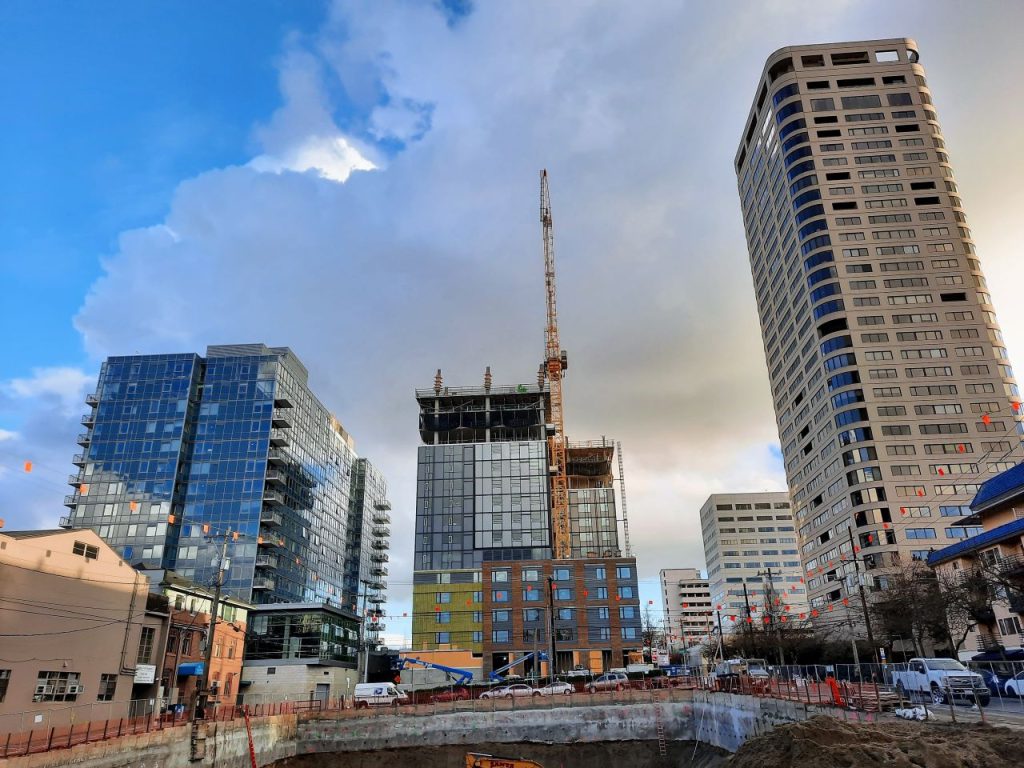
The 16-story tower could also be just the second affordable residential highrise added in Seattle in the last 60 years, following in the trailblazing footsteps of a 17-story First Hill tower that is nearing completion. That project was a collaboration between Bellwether and Plymouth Housing.
Ferndale shows ADUs matter, if nothing else.
The City of Ferndale in Whatcom County has announced that it will give a free Metallica-themed shirt to residents who construct an accessory dwelling unit (ADU) this year.
“Building an ADU is great for Ferndale,” said Mayor Greg Hansen in a press release, “it adds to our housing supply, provides opportunities for rentals or aging in place, and utilizes existing city infrastructure.”
“We understand that offering a free shirt is not going to be the tipping point for anyone deciding to invest in an ADU. But it sends a message that Ferndale is enthusiastic about working with our residents to tackle affordable housing, one ADU at a time,” Hansen also explained.
For more information on building an ADU in Ferndale, check out www.cityofferndale.org/ADU.
Natalie Bicknell Argerious (she/her) is a reporter and podcast host at The Urbanist. She previously served as managing editor. A passionate urban explorer since childhood, she loves learning how to make cities more inclusive, vibrant, and environmentally resilient. You can often find her wandering around Seattle's Central District and Capitol Hill with her dogs and cat. Email her at natalie [at] theurbanist [dot] org.


